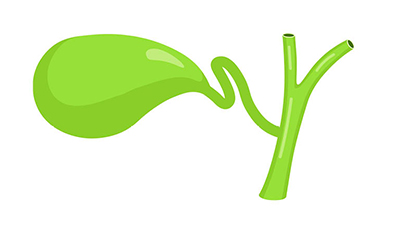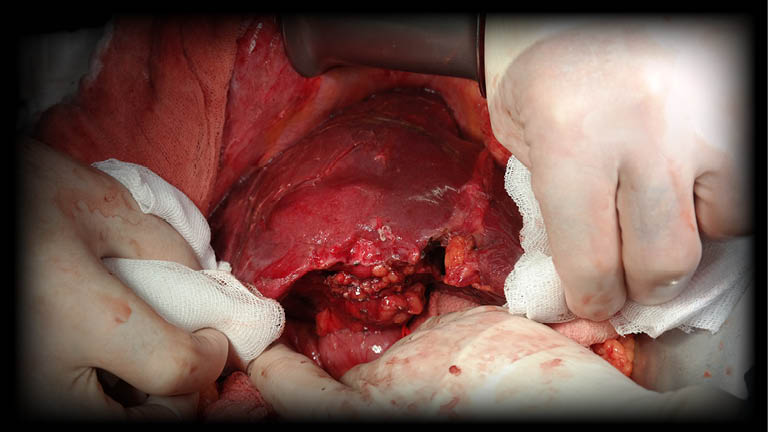Gallbladder
Functions Of The Gallbladder

The main function of the gallbladder is to store and concentrate bile, needed for the digestion of fats in food. Produced by the liver, bile flows through small vessels into the larger hepatic ducts and ultimately through the cystic duct (parts of the biliary tree) into the gallbladder, where it is stored (30 to 60 milliliters). The bile emulsifies fats in partly digested food, thereby assisting their absorption. Bile consists primarily of water and bile salts, and also acts as a means of eliminating bilirubin, a product of hemoglobin metabolism, from the body.
What Are The Symptoms Of Gallbladder Disease?

Gallstones usually do not cause any symptoms at first. Gallstones, which are usually silent, and are discovered incidentally during examinations or check-up when a doctor is consulted for a different reason.
The following symptoms may occur due to gallstones:
- A feeling of pain in the upper right region of the abdomen that suddenly and rapidly becomes heavy
- Back pain
- Pain in the right shoulder
- Nausea, vomiting
- Darkening of urine color
- Light colored stool
- Excessive gas and other digestive problems
- Diarrhea
Stones and Polypes are Most Common Problems of Gallblader

Gallstones and polyps are among the most common gallbladder diseases. Although gallbladder cancers are rare, they are diseases with more complicated treatments. Apart from these, functional problems such as bile evacuation disorders and parasitic diseases are among the gall bladder disorders.
Most of the gallstones do not cause any complaints and they appear incidentally in imaging performed for another reason. What are the risk factors for gallstones formation?
- Age
- Female gender
- Genetic factors
- Pregnancy
When Is Surgery Necessary For Gallbladder Polyps?


The most important parameter in the diagnosis and treatment of gallbladder polyps is the size of the polyp determined by ultrasonography. The majority of gallbladder polyps are less than 10 mm. Polyps smaller than 5 mm in size do not require any intervention. Polyps that are between 5-10 mm in size and do not cause any complaints are followed by imaging methods. If no growth is observed, the frequency of the controls is reduced. Gallbladder polyps over 10 mm in size should be operated on because of the risk of containing cancer cells or turning into cancer.
Bloating and feeling of fullness; The occurrence of symptoms varies from person to person. As the cysts grow, they begin to put pressure on the areas where they are located. This means that the disease manifests itself gradually.
How Should The Nutrition Be After The Cholecystectomy?
Short-Term Digestive Problems may be experienced after cholecystectomy. Keep in mind it can take several days for your appetite to return and several weeks for your digestion to normalize. Therefore, sticking to a healthy, low-fat diet and eating small, frequent meals instead of a few, large ones may help you feel your best. Most people get back to a regular, varied diet once they fully recover.
- Obesity
- Fast weight loss
- Very low calorie diet
- Operations for morbid obesity
- Estrogen and birth control pills
9 Recommendations for a Healthy Gallbladder

The most important step for a healthy gallbladder is to maintain weight. Excess weight is associated with an increased risk of developing gallstones. Maintaining your weight and getting regular exercise helps reduce the risk of gallbladder disease. Lose a healthy weight,
- Consume more fiber foods,
- Avoid excessive diets. Losing too much weight suddenly can have the opposite effect. Contact a specialist to lose weight.
- Reduce fat intake,
- Keep your cholesterol levels low.
